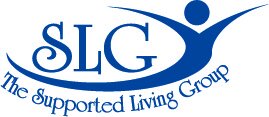Navigating the Pros and Cons: Neuralink's Potential Impact on Brain Injury Survivors
In recent years, advancements in neurotechnology have opened up new possibilities for individuals with brain injuries. One such groundbreaking development is Neuralink, a brain-machine interface company founded by Elon Musk. While the potential benefits are exciting, it's essential to consider both the positive and negative outcomes for brain injury survivors as we delve into the realm of neural interfaces.
Positive Outcomes:
Enhanced Communication:
Neuralink holds the promise of restoring communication abilities for brain injury survivors, such as those associated with the Connecticut ABI Waiver Program by allowing direct interaction between the brain and external devices.
Motor Function Restoration:
Individuals facing motor function challenges due to brain injuries may experience improved mobility through Neuralink's potential to connect the brain to prosthetic limbs or exoskeletons.
Cognitive Assistance:
Cognitive impairments resulting from brain injuries could be mitigated with the aid of Neuralink, offering support in memory retention and information processing.
Independence and Quality of Life:
Neuralink's applications may empower survivors to regain a level of independence, enhancing their overall quality of life through improved communication and mobility.
Negative Outcomes:
Ethical Concerns:
The ethical implications of brain-machine interfaces raise questions about privacy, consent, and potential misuse, especially considering the sensitive nature of individuals recovering from brain injuries.
Accessibility and Affordability:
The cost and accessibility of Neuralink technology may present challenges, limiting its availability to a select few and exacerbating existing healthcare disparities.
Long-Term Health Risks:
The safety of brain-machine interfaces over extended periods remains a concern. Long-term health risks and potential side effects need thorough examination before widespread adoption.
Social Stigma:
Individuals incorporating Neuralink may face societal challenges, including stigmatization and prejudice, as society grapples with the integration of such advanced technologies.
Conclusion:
As we stand on the cusp of a new era in neurotechnology, the potential outcomes of Neuralink for brain injury survivors assisted by The Supported Living Group are both promising and complex. Striking a balance between the positive impacts on rehabilitation and the ethical considerations surrounding its implementation is crucial. Ongoing research, transparent discourse, and an emphasis on inclusivity will be key in ensuring that advancements like Neuralink contribute positively to the lives of brain injury survivors without compromising their rights or well-being.

